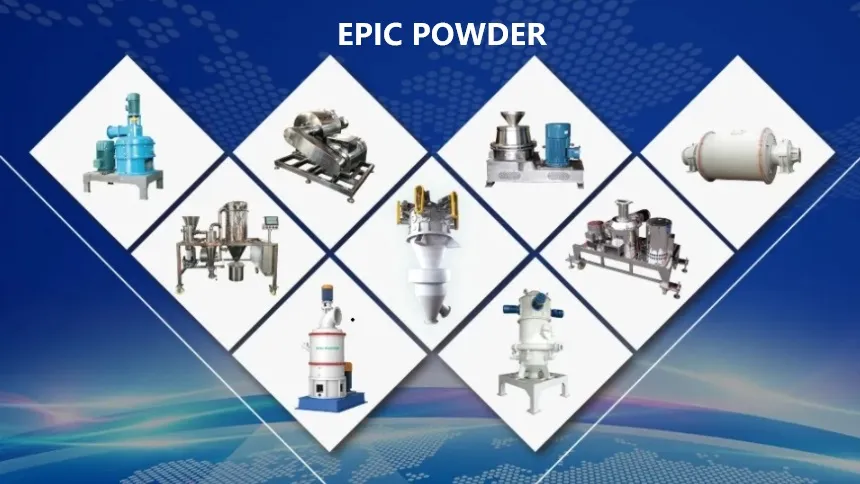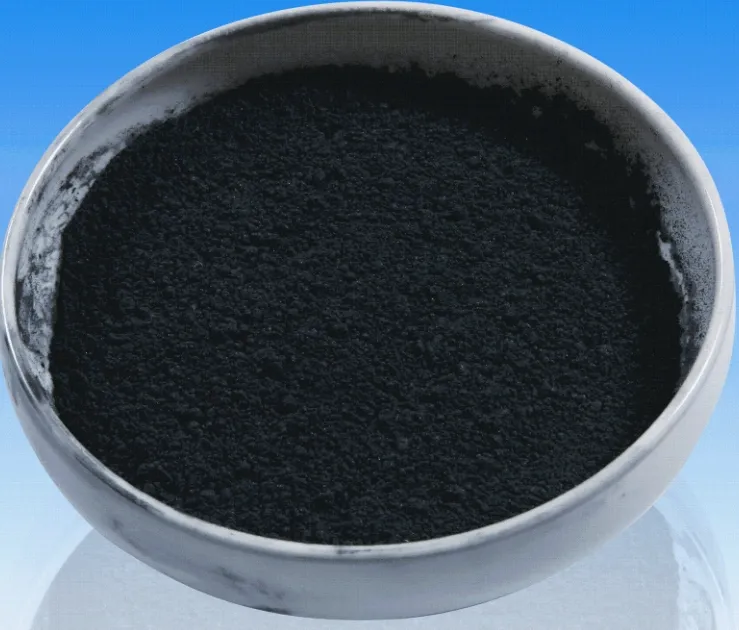Anode materials are crucial for lithium-ion batteries and directly affect battery performance. Graphite, the most used carbon-based anode, has low capacity and poor stability. Its safety and rate performance are hard to improve.
Finding new carbon-based materials to replace commercial anodes is a research focus.
Among carbon materials, porous carbon has high surface area and controllable morphology. Its rich pore structure and good conductivity enhance stability and reduce synthesis costs. Porous carbon is widely used in energy storage and catalysis. Its potential in lithium batteries is significant—let’s explore further.
Advantages of porous carbon materials for lithium batteries
Lithium-ion batteries use lithium ions as an energy transmission medium, and the electrodes are embedded electrochemical lithium storage mechanisms. When charging, lithium ions are generated on the positive electrode of the battery. The generated lithium ions are deintercalated from the positive electrode and move to the negative electrode through the electrolyte. The carbon material as the negative electrode has a layered structure and has many micropores. The lithium ions that reach the negative electrode are embedded in the micropores of the carbon material.
The more lithium ions are embedded, the higher the charging capacity. At this time, the negative electrode is lithium-rich, and the positive electrode is lithium-poor. At the same time, the compensation charge of electrons will be supplied to the carbon negative electrode from the external circuit, thereby ensuring the charge balance of the negative electrode. During discharge, lithium ions leave the anode and reinsert into the cathode via the electrolyte.
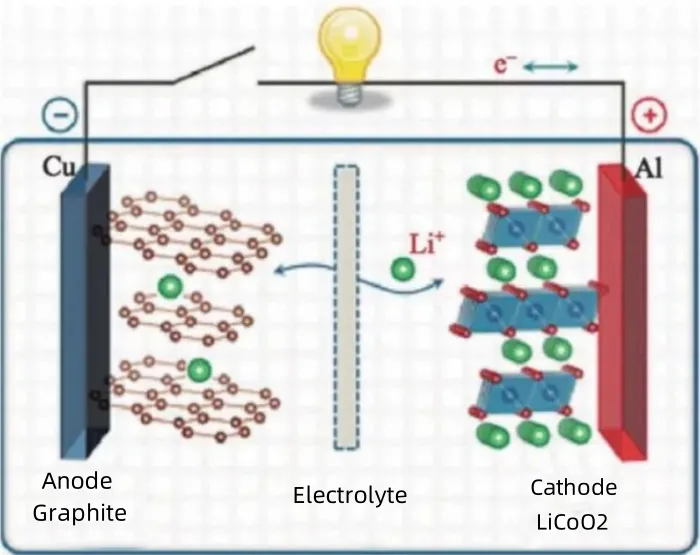
As a lithium-ion battery anode, porous carbon’s high surface area binds more lithium ions for higher capacity. Its complex pore structure provides efficient diffusion paths and shortens lithium-ion diffusion distance. Defects like vacancies and heteroatom doping serve as lithium storage sites. During lithium insertion/extraction, mechanical stress from volume changes is minimal, ensuring good cycle stability. Thus, porous carbon often exhibits better electrochemical performance than traditional graphite.
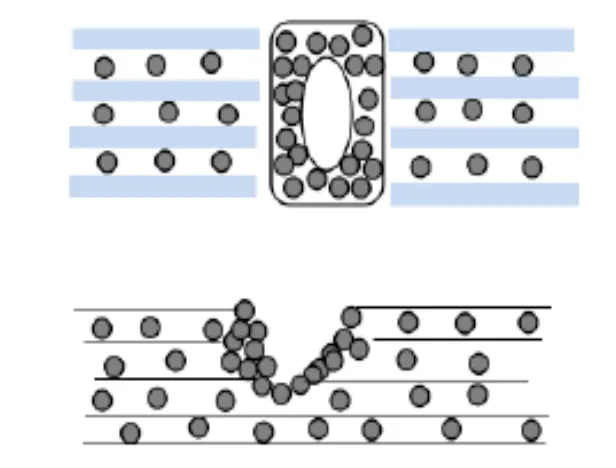
What is the optimal pore size for porous carbon?
Porous carbon can be divided into three types according to the pore size: microporous carbon (pore size less than 2nm), mesoporous carbon (pore size between 2~50nm) and macroporous carbon (pore size greater than 50nm).
Microporous carbon
Microporous carbon has a high specific surface area and exhibits high specific capacity as an electrode material. Researchers prepared high-surface-area microporous carbon using a templating method.
As a lithium-ion battery anode, it showed a large irreversible capacity (2547 mA·h/g). This is because the high surface area increases the SEI formation area.
Additionally, it provides more binding sites for oxygen- and hydrogen-containing functional groups. These functional groups undergo irreversible reactions with lithium ions, leading to high irreversible capacity. Significant capacity decay is observed in the initial cycles. Therefore, single-structure microporous carbon is not an ideal lithium-ion battery anode material.
Mesoporous carbon
Mesoporous carbon can also be used as a lithium-ion battery anode material.
Using ordered silica as a template, ordered mesoporous carbon (CMK-3) can be synthesized. It exhibits high reversible capacity and excellent charge-discharge cycling performance. After the first cycle, the charge-discharge capacity remains stable. This is because the ordered porous structure minimizes ion transport resistance, resulting in outstanding cycling stability.
Macroporous carbon
Ordered macroporous carbon prepared by the template method can also be used as a lithium-ion battery anode material.
Using inverse silica opals as a template, ordered macroporous carbon with a 3D interconnected pore structure and graphitized pore walls can be synthesized via the chemical vapor deposition (CVD) method using benzene.
As a lithium-ion battery anode, it maintains a capacity of 320 mA·h/g after 60 cycles at 200 mA/g, with a 98% capacity retention rate.
Using polymethyl methacrylate (PMMA) as a template, a 3D ordered macroporous material can be synthesized via the resorcinol-formaldehyde sol-gel method.
As an anode material, it achieves a capacity of 260 mA·h/g at 1000 mA/g, with an 83% capacity retention after 30 cycles.
Graded Porous
However, single-pore-structured porous carbon materials inevitably have some drawbacks.
To enhance their performance, hierarchical porous carbon—which integrates interconnected pores of different sizes in a graded structure—has become a research focus. The combined advantages are as follows:
- Micropores provide a high specific surface area, enhancing charge storage capacity and increasing lithium-ion battery capacity.
- Mesopores create fast transport channels for electrolyte ions, improving electrolyte infiltration.
- Macropores shorten ion diffusion distances, facilitating ion transport and ensuring high capacity retention under high current conditions.
For example:
By simply heating lithium carbonate and lithium hydride, sponge-like hierarchical porous carbon (Sponge-like HPC) with an ultra-high specific surface area (1049 m²/g) was synthesized in an environmentally friendly and efficient manner, as shown in the figure.
When used as an anode material for lithium-ion batteries, Sponge-like HPC exhibits:
Ultra-high reversible capacity (1750 mA·h/g at 0.2 A/g), Exceptional cycling stability (≈100% capacity retention after 2000 cycles),Outstanding rate performance.
Hierarchical porous carbon can also be modified through heteroatom doping, where some carbon atoms in the porous structure are replaced with other atoms. By exploiting the difference in electronegativity between carbon and foreign atoms, this modification adjusts the charge distribution and defect formation within the porous carbon, improving its physicochemical properties.
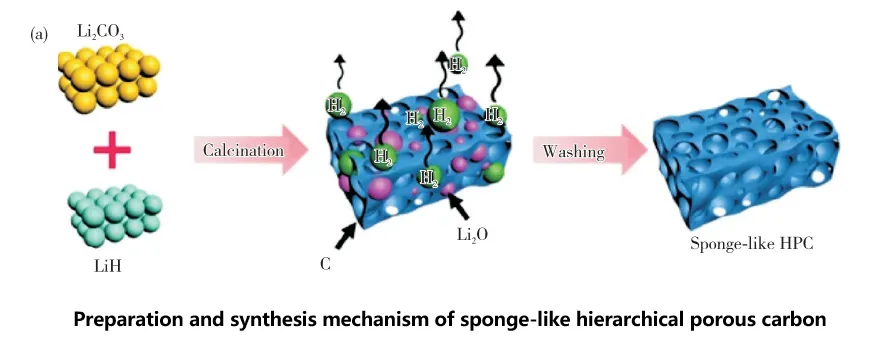
Porous carbon has potential applications
In research, scientists developed a porous carbon membrane by adding Fe3C to form honeycomb and finger-like pores. This porous carbon membrane achieves a high specific surface area. It can directly serve as both active material and current collector. The large pores provide enough internal space to withstand volume changes during charge/discharge. The asymmetric porous carbon membrane offers high-speed electron transport and promotes electrolyte and lithium-ion diffusion.
Although porous carbon may not match materials like carbon nanotubes or graphene in flexibility and mechanical properties, it is an ideal choice for high electrode mass loading.
Future research may explore combining porous carbon with graphene or carbon nanotubes. This could produce superior flexible lithium-ion battery current collectors for wearable devices.
Conclusion
Scientists believe that porous carbon has great potential for widespread use in self-supporting electrodes and current collectors. This is because the development of next-generation lithium-ion batteries will focus on higher capacity, longer lifespan, greater environmental friendliness, and lower cost. This will require current collectors to have more stable electrochemical performance, better conductivity, lighter weight, and lower cost. Moreover, future wearable devices will require current collectors with flexible structures. Therefore, compared to metal current collectors, nanocarbon current collectors have a much broader outlook.
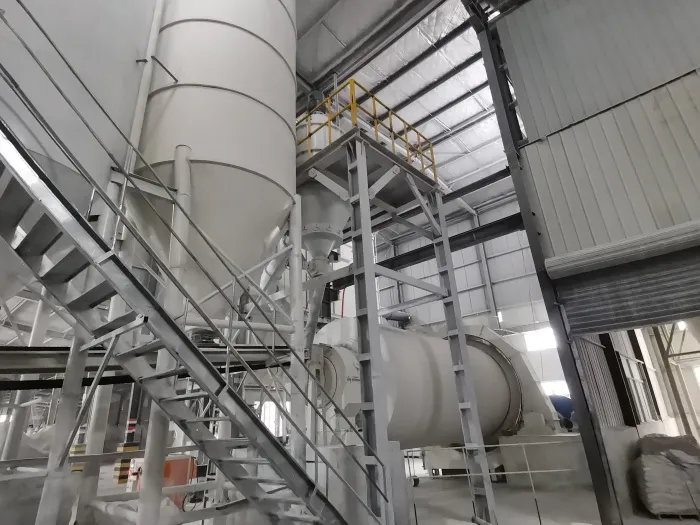
EPIC powder
Epic Powder, 20+ years of work experience in the ultrafine powder industry. Actively promote the future development of ultra-fine powder, focusing on crushing,grinding,classifying and modification process of ultra-fine powder. Contact us for a free consultation and customized solutions! Our expert team is dedicated to providing high-quality products and services to maximize the value of your powder processing. Epic Powder—Your Trusted Powder Processing Expert!
